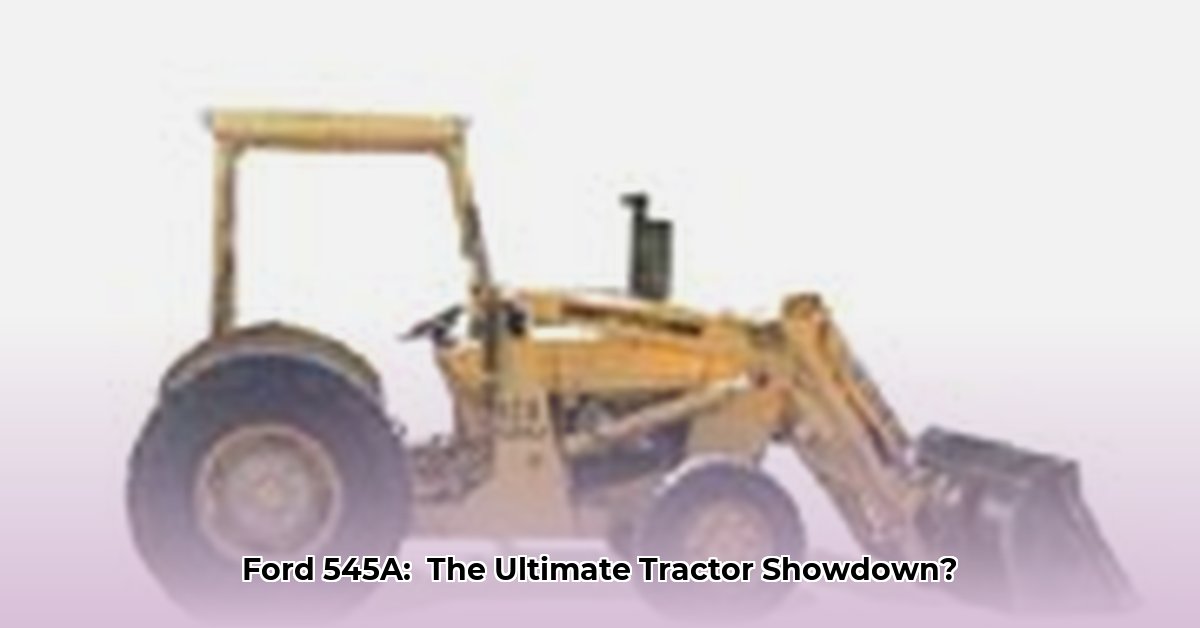
545 and 545A: A Detailed Comparison of Ford's Workhorses
The Ford 545 and 545A tractors, produced between 1979 and 1988, represent a significant chapter in Ford's agricultural legacy. While sharing a family resemblance, these workhorses possessed key differences impacting performance, fuel efficiency, and maintenance. This guide provides a comprehensive comparison, examining their specifications and exploring their place in agricultural history. For even more details, check out this dedicated resource: 545A information.
Under the Hood: Engine and Horsepower
Both tractors featured a robust Ford 3.3L three-cylinder diesel engine, the dependable heart of these farming machines. However, the 545A enjoyed a horsepower advantage, boasting 63 hp compared to the 545's 59.5 hp. This seemingly small difference translated to noticeable improvements in pulling power, especially when tackling heavy-duty tasks like plowing or hauling large loads. This upgrade reflects Ford's commitment to continuous improvement in response to farmer feedback. Did this increased power come at a cost? Let's explore that further.
Transmission and Power Take-Off (PTO)
Both the 545 and 545A offered farmers a range of transmission options: 4, 6, or 8 speeds, providing adaptability to various field conditions and tasks. Both models also incorporated a 540 PTO (Power Take-Off), allowing for the connection and operation of various implements, such as tillers, balers, and mowers. This versatility underscores Ford's design philosophy of creating a tractor capable of handling a broad spectrum of agricultural operations. The consistent PTO across both models reinforces the importance of this critical feature in meeting diverse farming needs.
Hydraulics and Lift Capacity
The hydraulic systems employed in both models were open-center systems, typical of the era. While the core design remained consistent, minor variations might have existed due to optional equipment and attachments selected by individual farmers. Both tractors boasted a rear lift capacity of approximately 3080 lbs, sufficient for most common agricultural tasks. This consistent lifting capacity highlights Ford's focus on providing reliable performance for essential farming operations across both model iterations. The design choices here suggest an emphasis on robust foundation over significant capacity increases.
Head-to-Head: A Spec-by-Spec Comparison
The following table summarizes the key specifications, facilitating a direct comparison between the Ford 545 and 545A:
| Feature | Ford 545 | Ford 545A |
|---|---|---|
| Engine | Ford 3.3L 3-cylinder Diesel | Ford 3.3L 3-cylinder Diesel |
| Horsepower | 59.5 hp | 63 hp |
| Transmission | 4, 6, or 8-speed | 4, 6, or 8-speed |
| PTO | 540 | 540 |
| Rear Lift Capacity | ~3080 lbs | ~3080 lbs |
| Production Years | 1979-1983 | 1984-1988 |
The 545A: An Evolution, Not a Revolution
The 545A wasn't a radical departure from its predecessor; rather, it represented a refinement. The increase in horsepower suggests Ford actively addressed farmer feedback, prioritizing enhanced performance. Subtle modifications to the hydraulics likely improved efficiency and responsiveness, resulting in a more refined user experience. Further research into design specifications and archived farmer feedback could uncover more insights into these specific improvements.
Practical Considerations: Restoration and Collector Value
Finding replacement parts for these vintage tractors might present challenges. However, dedicated online communities and specialist suppliers offer resources for restoration projects. The collector's market value varies greatly, depending on the tractor's condition, originality, and any unique features or options it may possess. Thorough research is crucial before purchasing a used Ford 545 or 545A.
A Lasting Legacy: Ford's Contribution to Agriculture
The Ford 545 and 545A represent a significant era in Ford's engagement with the agricultural sector. Their robust build quality, dependable performance, and versatility contributed decisively to farming practices of the time. These machines are more than mere tools; they embody the values of reliability and durability, securing a lasting place in the history of agricultural technology and the hearts of many farmers and collectors.